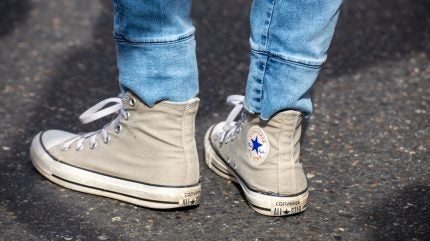
Nike first announced plans to restructure its business after reporting flat second quarter sales in December 2023. At the time Nike explained its ambition to realise cumulative cost savings over the next three years would be based on simplifying its product assortment, increasing automation and use of technology, streamlining the organisation, and leveraging its scale to drive greater efficiency.
It also shared that its ultimate aim was to use the cost savings to invest in future growth, accelerate innovation at speed and scale, and drive greater long-term profitability.
Fast forward to February 2024 and Nike confirmed to Just Style following media speculation that it was restructuring its workforce which would impact approximately 2% of its global team as it looked to “right-size” the business.
Meanwhile, CNBC alleged Nike CEO John Donahoe admitted in a memo that the company was not “performing at [its] best” and he held himself and the leadership team “accountable”.
Media reports are currently circling that suggest Nike’s footwear brand Converse will be cutting jobs as part of these wider plans, however Converse declined to comment and Nike had not responded to Just Style’s request for confirmation prior to publication.
GlobalData apparel analyst Louise Deglise-Favre describes the alleged cost-cutting at Converse as a “sound strategy,” noting the brand has been “underperforming” for a relatively long time and acting more as a “financial burden” for Nike than a revenue-generating division.

US Tariffs are shifting - will you react or anticipate?
Don’t let policy changes catch you off guard. Stay proactive with real-time data and expert analysis.
By GlobalDataShe says: “Cost-cutting measures will allow Nike to refocus some of its resources towards profit-generating segments of its business and potentially support its plans to start investing in innovation to regain some of its competitive edge. Like often in cost-cutting plans, the aim is to streamline the organisation, which often results in casualties within managerial roles.”
GlobalData retail analyst Neil Saunders points out that it is likely many of the cuts will be in Converse’s headquarters in Boston, as it runs as a fairly standalone business.
He suggests the cuts will probably be across a variety of functions including marketing, supply chain and product development.
Can cost-cutting support Nike’s ambitions?
Saunders argues Converse has been losing ground to products like Adidas’ Samba and other sneaker brands due to a lack of innovation and insufficient efforts to stimulate consumer demand. Because of this, he can understand why Nike would be cutting jobs at Converse as part of a wider cost savings package.
He adds that Converse is not the only part of the business impacted, but Nike clearly expects it to play a role in its streamlining process.
He views the main benefit of reducing costs as protecting the profit line at a time when sales are soft: “Arguably, the cuts may make Nike and Converse nimbler and more reactive, but that’s really a secondary benefit rather than the primary reason for layoffs.”
However, he adds, cutting is usually a reaction to a problem, and most retailers and brands cannot cut their way to success.
Saunders shares that other US retailers such as Walmart and Target have also been trimming jobs to stay competitive but the difference is, unlike Converse, they are doing this from a position of relative strength.
Ultimately, he underscores the main issue at Converse is on the sales line and adds: “Cuts do not fix that.”
Optimising operations, investing in Nike’s brand
Since the cost-savings initiative was first announced in December, Nike has seen a slight increase in its revenue with the company reporting in March that China remains a key focus for share growth.
Its third quarter (Q3) results beat Nike’s expectations and rose by 3% to $5.07bn from $4.91bn in the same period last year.
Nike’s chief financial officer Matt Friend attributed its Q3 growth to the “streamlining” efforts in both its support and operating functions, reducing management layers and shifting more of its resources towards consumer-facing activities.
“Overall, our focus is on allocating our resources to drive more return while building an operating model with greater speed and better cost productivity as we grow,” Friend said at the time.
Nike explained that its biggest focus for Q3 was to drive more product innovation with the intent of “delighting consumers and disrupting the industry” as well as leveraging new technologies to improve efficiency and drive more collaboration.



